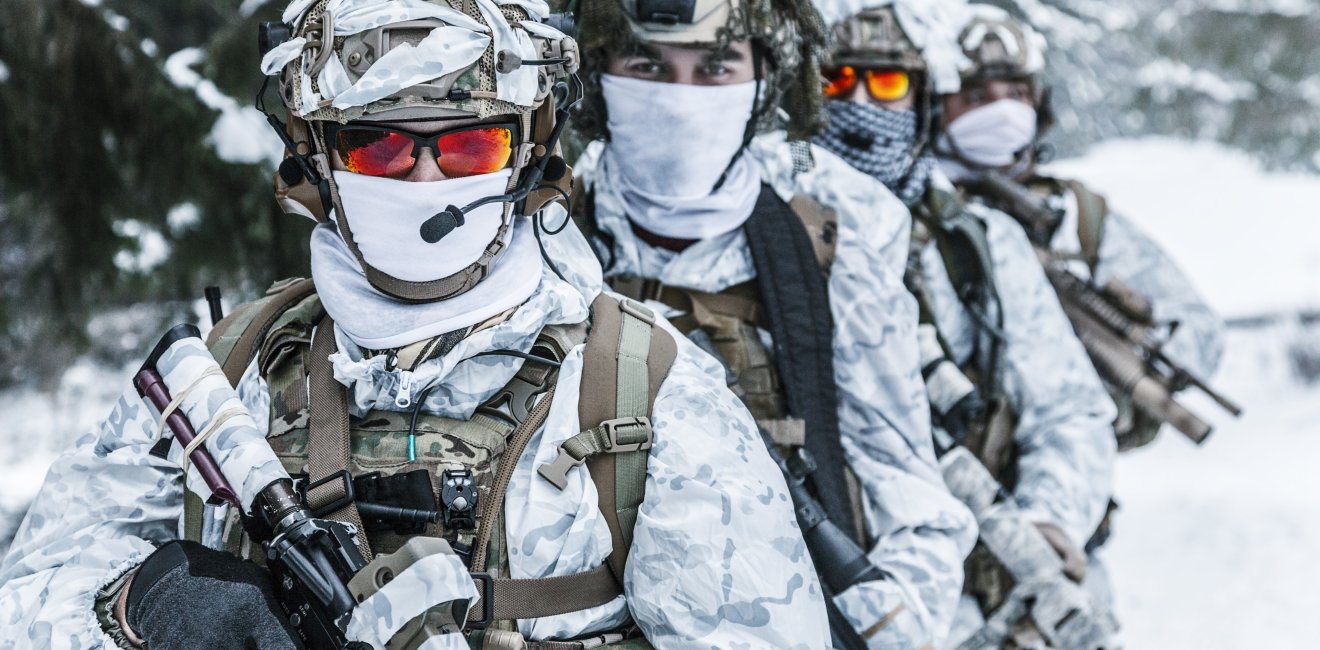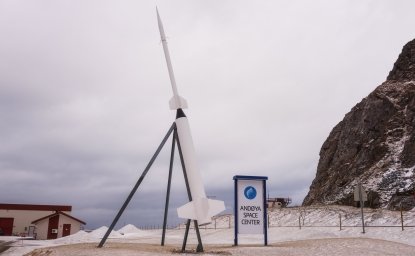No. 5 | It Is Time to Negotiate a New Military Security Architecture for the Arctic
The views and opinions expressed are those of the authors and do not necessarily reflect positions of the Polar Institute.

A blog of the Polar Institute
The views and opinions expressed are those of the authors and do not necessarily reflect positions of the Polar Institute.

Arctic countries can no longer ignore mounting military pressure in the European Arctic. The Biden Administration must address the issue head-on by building proper mechanisms for circumpolar dialogue on hard security. We offer recommendations aimed at preventing further escalation in the European High North.
Hard security issues are coming back to the Arctic, with the focus on military activity in the European High North.
This is a worrying development. To encourage a thaw in Cold War relations the former Soviet leader Mikhail Gorbachev’s Murmansk speech in October 1987 declared the Arctic should be a ‘zone of peace’ and cooperation. From there, Arctic countries increased their collaboration significantly on issues of common concern, such as environmental protection and sustainable development, and notably through the Arctic Council, founded in 1996. Military activities were scaled back.
Despite the revitalization of intense military interest in the Arctic, the international community remains committed to the idea of ‘Arctic exceptionalism’: namely, that the Arctic should be kept free of military conflict and insulated from geopolitical spillover spread by interstate rivalry elsewhere. As a popular refrain has it, the High North is to be kept as an area of ‘low tension.’
We cannot ignore that this aspiration is being severely tested by increased military activity and related defense and security issues creeping into the European High North. There is real danger that the spirit of ‘low tension’ could slip away.
The boot print of the military is spreading across the Arctic. For over a decade, the Kremlin has been adapting Russia’s force posture and revamping its military capabilities, alongside the creation of a full-fledged military district for the Arctic in January 2021, OSK Sever. In the United States, recent strategic documents from the U.S. Navy, the Air Force, now the Army, as well as the June 2020 Arctic Memorandum showcase increased military interest. So does the reactivation of the U.S. Second Fleet. Meanwhile, countries like Canada and Sweden have been increasing their defense budgets with a particular Arctic focus.
The nature of military activity is also darkening. Russia is conducting unacceptable military activity at peacetime, such as simulated airstrike formation against Norwegian military assets or GPS jamming in northern Finland and Norway. Meanwhile, the U.S. is increasing their presence through the reopening of Air Force and Marines facilities in Keflavik, or through the large-scale freedom of navigation exercise that took place in the Barents Sea in May 2020. NATO allies are keeping pace, with high intensity exercises held in Norway like Trident Juncture and more recent iterations of Cold Response.
Geographically, the potential for miscalculation, accident and confrontation is concentrated in the Greenland-Iceland-United Kingdom/Norway (GIUK/GIN) gaps, thereby increasing pressure towards the North Atlantic, the Barents Sea, and the Norwegian Sea. This area is a ‘gateway region’ where access and freedom of operation are key components, especially for Russia and NATO allies.
One consequence is the re-emergence of an Arctic security dilemma fueled by increased military presence in the region. The military activity of the US and its allies is feeding Russia’s sense of encirclement, ‘justifying’ the expansion of Kremlin’s own militarization efforts, which in turn informs Western policy decisions to further toughen posture, increase numbers, and grow presence.
The risk is that this action-reaction dynamic in the European Arctic will continue to escalate. More military activity in the region means that incidents at sea and environmental―if not nuclear―accidents will require careful management to avoid miscalculation and confrontation. Left unaddressed as Russia grows bolder and more assertive, such incidents could potentially escalate into a dangerous, possibly even armed, dispute.
Another risk relates to horizontal escalation: namely, the spillover of tension from another theater―for example the Baltic Sea or the North Atlantic―to the Arctic. Collectively these regions form a “Wider North.” A crisis in one area will affect the whole region.
However, concerns over growing insecurity in the Arctic must be kept in perspective: there is still little likelihood of deliberate or direct confrontation ‘over’ the Arctic per se.
In order to address military security issues, the knee-jerk reaction is to call on NATO to push for dialogue with Russia on Arctic military affairs, whilst guaranteeing the security of allies through deterrence. NATO’s attention is indeed moving North. For instance, the recent NATO 2030 report calls for increased “situational awareness across the High North and the Arctic” as well as for the creation of a proper Arctic strategy.
The problem is that NATO is not the ideal place to discuss military security affairs in the Arctic. Russia has refused to entertain the idea, whilst Canada, Denmark and Norway have all expressed caution about asking NATO to lead the response to Russia. Antagonizing Russia unnecessarily goes against the idea of a ‘low tension’ Arctic.
Recent expert opinion goes against this logic and could lead to a dangerous path: that for instance NATO should take the lead in military security affairs, create a Standing NATO Maritime Group for the Arctic, or establish a full-fledged Arctic Command.
This is not the right approach. Although we agree that NATO must be present in the Arctic, we advise two things. First, the Alliance collectively needs to answer the question ‘how much NATO do we want?’ in the European High North. Innovative efforts can be made to strengthen military security and domain awareness in the region, without putting NATO at the forefront of the response to Russia. It is vital that NATO maintains a flexible and normalized routine presence in the Arctic so as not to cede de facto control to Russia.
Second, it is paramount to clearly differentiate between Alliance contributions as an institution and national or joint endeavors of member states and other partners to Arctic security. Whether bilaterally or in coalitions, smaller groupings within NATO already exist, such as the Joint Expeditionary Force (JEF) and the Northern Group.
NATO, though, cannot secure the Arctic on its own. Dialogue between NATO allies and Russia on Arctic military matters is essential. The issue is that the ‘Arctic 8’ have long been reluctant about discussing their military interests collectively, for fear that it would disrupt consensus around other key issues facing the region.
Many attribute the Arctic Council’s successes in other areas to the fact that military affairs were excluded from its official remit. Consequently, on those occasions when the ‘Arctic 8’ have collectively discussed military affairs, they have done so by devising alternative forums: namely, the Arctic Security Forces Roundtable (created in 2011) and the Arctic Chiefs of Defense Staff meetings (2012). However, these forums were structured in such a way that Russia’s participation became untenable after fallout spread from the Crimea crisis. Since the demise of these institutions, multilateral military dialogue with Russia in the Arctic has been almost non-existent.
It is therefore paramount that a new dialogue begins on how to collectively address the role and place of defense-related, hard security and military issues, crafted in such a way as to once again insulate the Arctic from geopolitical tensions elsewhere. This dialogue should also strengthen soft security cooperation in the Arctic, through existing lines of bilateral and multilateral diplomacy.
We think it is necessary to establish a dedicated mechanism that helps regional stakeholders address Arctic military security concerns.
The first task for this mechanism is to create an Arctic Military Code of Conduct (AMCC) with all relevant parties. This would help define the ‘rules of the road’, namely what are (il)legitimate and (un)acceptable military practices at peacetime. The Code would offer a functional, holistic framework regulating military activity. The ultimate goal is to decrease the risk of miscalculation and escalation through predictability and transparency.
In terms of format, such a mechanism would deal exclusively with defense-related and military security affairs. It should be a flexible dialogue, as circumstances dictate, while avoiding over-institutionalization. This mechanism should also be inclusive, and engage countries capable of conducting and sustaining military operations in the Arctic, as it is a shared endeavor.
Finally, it should help streamline accountability and responsibility over military activity. Small steps could be achieved, for instance, through more reciprocal information-sharing for military movement or reciprocal invitations to observe military exercises.
In this context, what should the Biden administration do? The new team in the White House cannot ignore these issues and will have to address mounting military security pressure in the European High North.
In terms of policy, the Biden administration should first do away with Trump’s obsessive approach to ‘bridge the icebreaker gap’ through procurement. It would also be advisable to pool resources across all armed forces branches and link up existing Arctic strategies, for instance between the Navy and the Air Force.
America’s particularly aggressive rhetoric over Arctic affairs during the Trump presidency should be replaced with a more mature and predictable discourse, while being inclusive and mindful of allies in the European High North. This change of position should also keep China in mind, as there are now concerns over Chinese interests in the High North, both in terms of governance and control of scientific and commercial projects.
Stronger bilateral engagements are advisable, and the new U.S. administration should consider reaching out to Russia on that front. This should, of course, not be code for accepting Russia’s intolerable actions in Ukraine. Nevertheless, Russia’s chairmanship of the Arctic Council and the Arctic Coast Guard Forum in 2021-2023 presents a unique opportunity to engage Moscow over Arctic military security in ‘parallel’ diplomatic tracks. The Biden Administration should not let this opportunity slip.
Ultimately, and without over-amplifying the significance of hard security affairs in the Arctic, U.S. policy makers must find a balance between military overreach and a ‘security void.’ This balance must be found sooner than later.



Since its inception in 2017, the Polar Institute has become a premier forum for discussion and policy analysis of Arctic and Antarctic issues, and is known in Washington, DC and elsewhere as the Arctic Public Square. The Institute holistically studies the central policy issues facing these regions—with an emphasis on Arctic governance, climate change, economic development, scientific research, security, and Indigenous communities—and communicates trusted analysis to policymakers and other stakeholders. Read more



